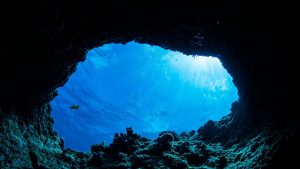Ahmed Gabr, an Egyptian national holds the record for the world’s deepest dive. He reached depths of over 332m and returned to surface within 14 hours. The Egyptian also holds the world record for the deepest cave dive. This was recorded in South Africa’s Boemansgat cave.
However, not all dives are safe, especially deep dives. There are limits to what the human body can handle and deep dives test them to the core. Even going deeper than 60m can come with certain health risks. The biggest problem lies in the Nitrogen narcosis which can lead to altered consciousness. This is why divers going deep need to be careful about how the depth of the water is influencing their breathing. This state occurs with higher nitrogen intake.
Since the oxygen which divers breathe is condensed underwater, the nitrogen intake is higher as well. As a result, there are reasons for concern even for the most experienced divers. Many depths of the world remain unexplored due to the water’s increasing pressure.
Table of Contents
Deepest dives

Some of the deepest dives humans can handle are seen in the pearl diving community. Just before the technological boom which leads to the manufacturing of oxygen tanks, pearl divers used to dive freely, just by holding their breaths. A typical pearl collection dive could go as deep as 40 meters.
Over the years, pearl divers learned how to hold their breaths for up to 2 minutes at a time, without any scuba certification. This allowed them to go deeper and deeper with every dive. Two processes changed this forever. First, the advanced in technology such as dive computers made theses dives easer. Then, pearls were starting to be produced on specialized farms and the need for free pearl divers started to decrease considerably.
Thick-Billed Murres also hold records for deep dives. The birds go diving to get fish. Surprisingly, they float on water just like ducks. But in a short time, they can dive deep to catch a fish. The longest Murres dive was recorded at 831 feet. This is impressive considering these animals are just regular birds.
Dolphins and whales such as the Killer whales can dive between 900 feet and 990 feet. Both of them are capable of heading towards the surface at a time. Dolphins are particularly fond of traveling at surface level for fun.
Read More : Deep-Sea Diving Tips For Beginners
Penguins and their unmatched diving skills

Emperor penguins are among the birds best at swimming. Their bodies are perfectly adapted to all types of diving. Penguins can reach depths of around 500 feet. Since they have full bone density, there are reduced chances of sickness on ascents. A special type of protein which holds oxygen has been discovered in these types of penguins. Furthermore, penguins are also adapted to shut off non-vital organ functions at deep dives. This is why penguins can take up to 18 minutes before appearing back at the surface for a fresh breath of air.
At 2,300 feet (700m), only divers with specialized decompressed suits can dive. These suits protect them from all the dangers of diving. They are suitable for longer diving sessions. Those wearing such suits don’t need to be skilled swimmers either. Such depths are rarely reached even with these suits. However, working on pipelines or for scientific research requires people wearing these suits to go anywhere near these depths.
At 2,700 feet, deep waters see humans only in submarines. Some of the most hi-tech military submarines have been built to resist such pressures. Such submarines are usually used for warfare operations. Going deeper is nearly impossible for humans and technology.
Extreme deep diving in the Mariana Trench

Some of the deepest dives in the Mariana Trench are also some of the most dangerous. At depths of around 35,000 feet (10,000m), the dangers are increasing, even for technology-based dives. Several attempts have been made in this region of the earth and it is believed a species of snailfish lives here. However, not much is known about this snailfish, due to its reaction when taken back to surface and due to the massive cost of diving at such depths.
In 1960, a crew of two people descended to the maximum depth of the trench in the Bathyscaphe Trieste. They stayed there for around 20 minutes before a window begun to crack, prompting them to rise to the surface. Nearly 5 hours were needed to make the descent. At the time of the dive, the 2 people inside the submersible claimed to have seen a species of fish at the bottom of the trench. There is no evidence to this claim and many believe it to be false today.
Conclusion
Regardless of the various depths recorded in history, it is very expensive to organize such activities with the proper technology. Not many can establish the levels to which humans can go comfortably without a protective suit, as it may vary from case to case. However, some of the deepest points of the world have already been explored.
It is often believed that some types of whales are the only species which can handle extreme depths. However, explorations in the Mariana Trench showed possible life even with species which live in such extreme conditions. Practically, the snails found at these depths are never rising above a certain level as they are adapted to these depths.
Further studies are expected in the areas of the deepest points of the earth. Scientific research is the main driver for these dives and many species can be studied at depths which were not accessible before the rise of technology and manufacturing. Until the next Deepsea Challenger is built, Mariana snailfish is one of the few species known to live and handle the deepest dives on the planet.






